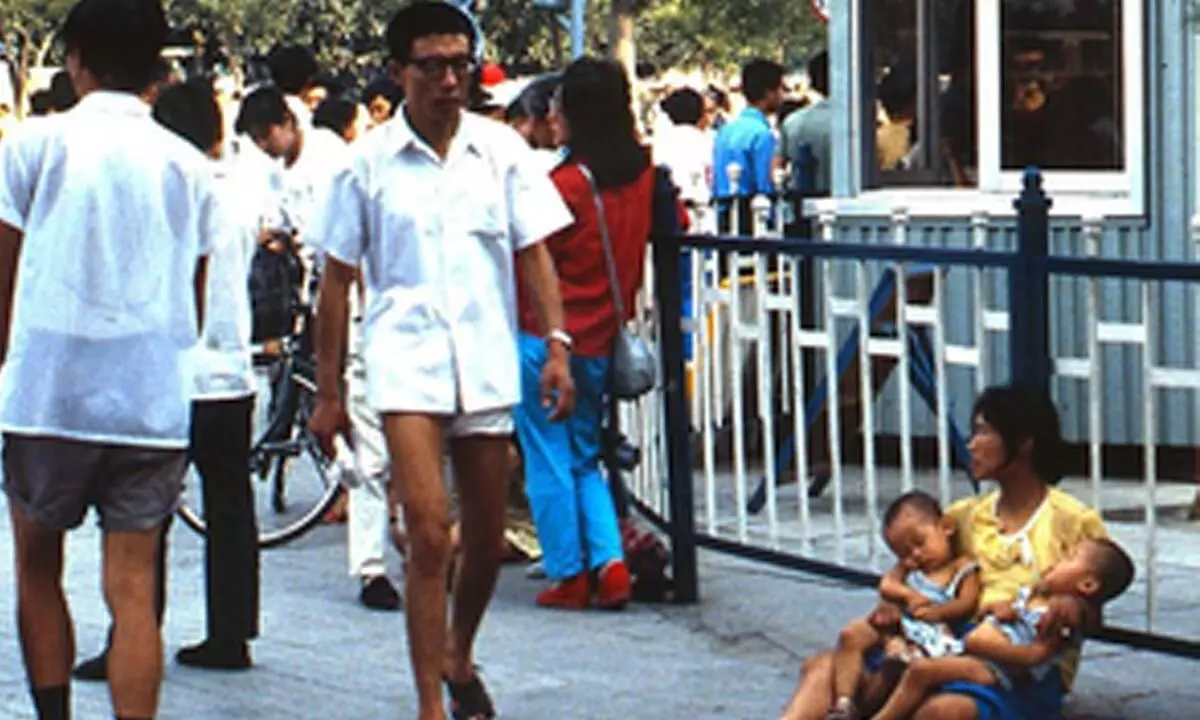China’s desperation to save its demographic crisis
Share :

The People's Republic of China (PRC) has recently abolished its longstanding foreign adoption policy, which had been in effect for over thirty years, effectively halting cross-border adoptions.
New Delhi: The People's Republic of China (PRC) has recently abolished its longstanding foreign adoption policy, which had been in effect for over thirty years, effectively halting cross-border adoptions.
Mao Ning, the spokesperson for China's Foreign Ministry, asserted that this policy shift aligns with global trends. However, this decision has raised concerns among many, particularly in the United States, regarding the status of pending adoption applications in China. In recent years, China has implemented a series of reforms aimed at addressing its demographic challenges, which are largely a consequence of the former 'one-child' policy enforced from 1979 to 2015.
As the country faces what is perceived as a demographic crisis, it is now adopting new strategies and modifying existing policies to navigate these challenges.
In 1980, Deng Xiaoping introduced the one-child policy in China as a response to the population reaching nearly one billion, with the expectation that it would stimulate economic growth.
Unlike typical family planning strategies that rely on public education and encouragement, China adopted a more severe approach—strict enforcement. The National Health and Family Planning Commission implemented a range of incentives and rewards for compliance with the one-child policy while imposing punitive measures, including hefty fines and job losses for those who violated the rules.
The most extreme enforcement tactics involved forced abortions, sterilisations, and the insertion of intrauterine devices (IUDs), which grossly infringed upon the reproductive rights of women in China. Official statistics from the Chinese health ministry indicate that approximately 336 million abortions, 196 million sterilisations, and 403 million IUD insertions occurred during this policy's enforcement, generating an estimated revenue of two trillion yuan (around $315 billion).
The implementation of China's one-child policy had severe consequences, particularly for the working class population. While the affluent could circumvent the policy's restrictions by paying substantial fines, the working class faced the most significant hardships. The policy deprived second-born children of basic rights, such as legal registration in the national household system, access to healthcare, and education.
As a result, many families were compelled to take drastic measures to avoid punishment. China's cultural preference for male children exacerbated the situation, leading to an increase in the abhorrent practice of female infanticide. Estimates suggest that approximately 20 million female babies fell victim to sex-selective abortions.
Other practices included child abandonment and adoption, predominantly involving female children. Consequently, China became the largest source of cross-border adoptions during the one-child policy era. The policy's enforcement was so draconian that it marked one of the darkest phases in China's history.
In 1981, the People's Republic of China established its first comprehensive legislation recognising adoption, which had previously been largely absent from Chinese cultural practices due to traditional beliefs surrounding the preservation of bloodlines. However, the one-child policy led to a cultural shift towards adoption as a means of navigating the severe penalties associated with policy violations.
The 1991 Adoption Law introduced significant reforms for domestic adoptions, allowing childless citizens under 35 to adopt collateral blood relatives without facing the usual legal restrictions.
Consequently, there was an increase in domestic adoptions, particularly involving second-born children being surrendered to blood relatives, effectively severing their legal ties to their birth parents even if they continued to be raised by them.
Further amendments to the Adoption Law in 1998 lowered the minimum age for adoptive parents to 30 and broadened access to children in social welfare institutions for adoption. These changes were likely a governmental response to the rising instances of child abandonment and informal adoptions. To facilitate the process further, China also began permitting foreign adoptions.
In 1988, China began permitting foreign adoptions, initially restricting eligibility to those of Chinese descent or individuals with strong ties to the country. However, the reforms introduced in the 1991 Adoption Law marked a significant shift, centralising and streamlining the process for cross-border adoptions.
It is estimated that approximately 160,000 children have been adopted internationally, with around 82,000 of these adoptions occurring in the United States over the past thirty years; this figure does not account for adoptions from the early 1980s and 1990s. Despite this progress, China also faced a troubling rise in illegal baby and child trafficking networks operating from provincial capitals, targeting cross-border adoptions.
Tens of thousands of children were reportedly sold to orphanages each year for foreign adoption without the knowledge of prospective adopters. This illicit activity peaked in 2005, prompting China to impose stricter regulations on foreign adoptions through enhanced requirements in 2007 and again in 2015.
The one-child policy was abruptly terminated in 2016, resulting in various demographic challenges for China, including significant gender imbalance, a decline in the total fertility rate among females, and a growing tendency among the population to remain childless.
In response to these issues, the government has implemented new policies aimed at encouraging larger families. This shift is evident in the introduction of the two-child policy in 2016, followed by the three-child policy in 2021, and the provision of extended paid marriage leave to enhance fertility rates in 2023—an increase of 360 degrees from previous regulations.
Concurrently, additional measures have been enacted to address economic difficulties arising from these demographic changes. The inverted age structure, characterised by a rapidly increasing elderly population, has prompted recent decisions to raise the retirement age over the next five years. The decline in the working-age population, combined with rising youth unemployment, has emerged as a consequence of China's family and economic planning strategies, particularly following the zero-COVID policy.
Estimates from 2019 indicated that the state pension fund could be depleted by 2035, alongside reductions in medical benefits for retirees, further complicating China's situation amid a shrinking population and the slowest growth rate recorded in sixty years.
The ongoing fluctuations in China's demographic statistics continue to illustrate the profound effects of the one-child policy and the nation's urgent attempts to rectify its historical mistakes. The recent decision to halt foreign adoptions is yet another indication of China's desperation to address its demographic challenges.

















